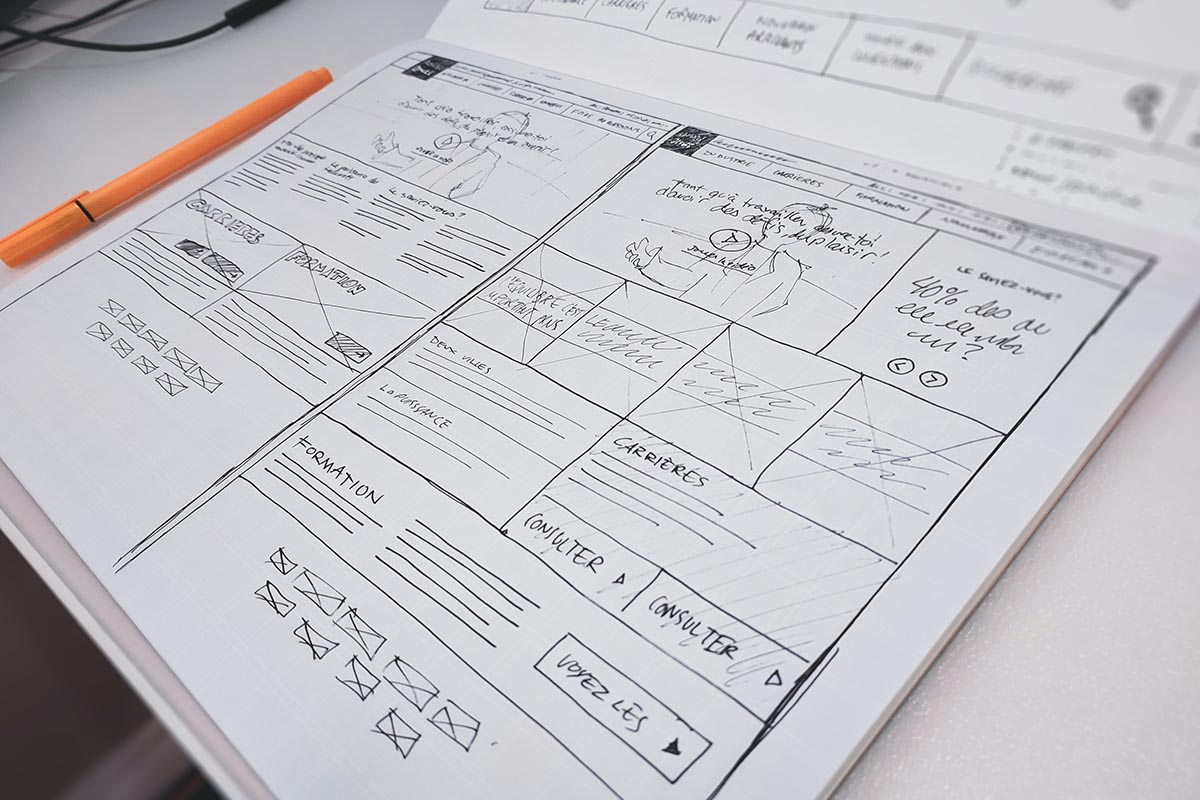SEO, Systems, and User Experience Online: Finding the Perfect Balance
Key Points
SEO Builds Visibility – Without proper SEO, even a beautifully designed site won’t reach its audience or potential.
Systems Ensure Stability – Strong technical infrastructure supports performance, security, and long-term scalability.
User Experience Drives Engagement – Seamless, user-focused design keeps visitors engaged and increases conversions.
The digital landscape operates like a three-legged stool—remove one leg, and everything collapses.
Businesses often excel at one aspect while neglecting others, creating an imbalanced online presence that fails to reach its potential.
Success requires more than just ranking well on search engines or having beautiful design.
It demands intentional integration of SEO best practices, robust system infrastructure, and user-centric design working in perfect harmony.
Understanding the Three Pillars of Digital Success
SEO as the Foundation for Visibility
Search engine optimization serves as your digital storefront’s address.
Without proper SEO, even the most impressive website remains hidden from potential visitors searching for your solutions.
Technical SEO goes beyond keywords, encompassing site structure, crawlability, and indexation.
These elements determine whether search engines can effectively understand and rank your content.
Organic traffic remains one of the most valuable sources of visitors, and when paired with strong user experience online, it brings users actively seeking solutions, making them more likely to convert than passive browsers.
Systems Infrastructure as the Backbone
Behind every successful website lies a complex network of systems working seamlessly together.
Database management, server configuration, and application architecture form the invisible foundation supporting user interactions.
System reliability directly impacts both user satisfaction and search rankings.
Google considers page speed and uptime as ranking factors, making infrastructure optimization crucial for visibility.
Modern businesses require systems that scale effortlessly.
What works for 100 daily visitors may crumble under 10,000, making scalable architecture essential from day one to ensure performance and a seamless user experience online.
User Experience as the Differentiator
UX transforms visitors into customers.
While SEO brings people to your door and systems keep everything running, user experience determines whether they stay, engage, and return.
Every interaction shapes perception.
From navigation clarity to content readability, each element contributes to the overall impression users form about your brand.
Common Pitfalls When These Elements Are Misaligned
SEO Issues That Harm User Experience
Over-optimization creates content that ranks well but reads poorly.
Keyword stuffing and unnatural phrasing may trick algorithms temporarily but drive away human readers permanently.
Technical SEO problems multiply quickly when left unchecked.
A common canonicalization issue occurs when multiple URLs serve identical content, confusing search engines and diluting ranking power across pages.
Duplicate content issues extend beyond simple copying.
Product variations, print versions, and session IDs can create thousands of duplicate pages, each competing against the others for rankings.
Poor URL structure frustrates both users and crawlers.
Dynamic parameters, endless subdirectories, and meaningless strings damage clarity and weaken overall user experience online.
Would you like me to also rework this into a short checklist-style tip for SEO and readability?
System Limitations Affecting Both SEO and UX
Slow loading times represent the ultimate failure of system optimization.
Users abandon sites that take more than three seconds to load, while search engines actively penalize sluggish performance.
Database inefficiencies create cascading problems throughout your site.
Poorly optimized queries slow page generation, increase server load, and degrade the experience for all visitors simultaneously.
Inadequate hosting resources manifest during critical moments.
Traffic spikes from marketing campaigns or viral content can crash under-provisioned servers, losing customers and damaging reputation.
Legacy systems often lack modern optimization capabilities.
Outdated content management systems may not support essential SEO features or responsive design requirements.
UX Decisions That Undermine Technical Performance
Visual appeal sometimes comes at performance cost.
Heavy animations, auto-playing videos, and high-resolution images create engaging experiences but dramatically slow page loading.
JavaScript-heavy interfaces can block search engine crawlers entirely.
Single-page applications without proper server-side rendering remain invisible to many search engines.
Industry-Specific Integration Strategies
E-commerce Optimization
Online stores face unique challenges balancing product discovery with performance.
Faceted navigation helps users find products but creates millions of indexable URL combinations.
Product pages require rich media for conversions while maintaining fast load times.
Image optimization, lazy loading, and content delivery networks become essential tools.
Structured data implementation enables rich snippets in search results.
Product ratings, prices, and availability displayed directly in search listings increase click-through rates significantly.
B2B and Enterprise Solutions
Complex business requirements demand sophisticated system integration.
Different departments need specialized tools that must communicate seamlessly while maintaining security and performance.
Manufacturing companies particularly benefit from integrated systems.
An ERP solution for manufacturing connects inventory management, production planning, and customer relationships into one cohesive platform.
Scalability becomes paramount when serving enterprise clients.
Systems must handle massive data volumes, concurrent users, and complex workflows without degradation.
Security considerations add another layer of complexity.
Balancing accessibility with protection requires careful planning and continuous monitoring.
Content-Heavy Websites
Information architecture determines findability for content-rich sites.
Logical categorization, clear navigation paths, and robust search functionality guide users to relevant content efficiently.
Publishing platforms must balance comprehensive content with page performance.
Pagination, infinite scroll, and dynamic loading each offer benefits and drawbacks.
Internal linking strategies boost both SEO and user engagement.
Strategic connections between related content keep visitors exploring while distributing link equity throughout the site.
Practical Tools and Technologies for Optimization
SEO and Analytics Tools
Modern SEO requires sophisticated monitoring and analysis tools.
Google Search Console provides essential insights into search performance, indexation issues, and mobile usability problems.
Performance tracking extends beyond rankings to user behavior.
Analytics platforms reveal how visitors interact with your site, identifying friction points and optimization opportunities.
Technical SEO auditing tools automate problem detection.
Regular crawls identify broken links, missing meta descriptions, and structural issues before they impact rankings.
System Management Solutions
Backend optimization tools monitor server performance continuously.
Real-time alerts enable rapid response to issues before they affect users.
Content delivery networks distribute static assets globally.
Serving files from geographically nearby servers reduces latency and improves loading times for international visitors.
Database optimization tools identify slow queries and suggest improvements.
Regular maintenance prevents performance degradation as data volumes grow.
Enhancing Physical Workspace for Digital Work
Digital optimization extends to the physical environment where work happens.
Comfortable, ergonomic workspaces improve productivity and reduce fatigue during long optimization sessions.
Proper equipment makes a significant difference in daily efficiency.
For developers and content creators spending hours typing, Steed offers a range of prebuilt mechanical keyboards that provide superior tactile feedback and durability compared to standard keyboards.
Monitor positioning, lighting quality, and desk organization all contribute to sustained focus.
Small improvements in physical comfort yield substantial productivity gains over time.
Best Practices for Maintaining Balance
Regular Audits and Monitoring
Establishing review cycles prevents small issues from becoming major problems.
Monthly technical audits, quarterly content reviews, and annual strategy assessments keep all elements aligned.
Key metrics require constant attention.
Core Web Vitals, conversion rates, and user engagement metrics provide early warning signs of imbalance.
Cross-Department Collaboration
Breaking down silos between teams improves outcomes across all areas.
SEO specialists, developers, and designers must communicate regularly to avoid conflicting priorities.
Unified goal setting aligns efforts toward common objectives.
When everyone understands how their work impacts overall success, collaboration becomes natural.
Shared documentation ensures consistency across teams.
Style guides, technical specifications, and optimization checklists create common reference points.
Continuous Testing and Iteration
A/B testing reveals user preferences objectively.
Small changes in layout, copy, or functionality can dramatically impact conversion rates.
User feedback provides qualitative insights that metrics miss.
Regular surveys, user testing sessions, and support ticket analysis reveal pain points and opportunities.
Performance optimization never ends.
New technologies, changing user expectations, and evolving search algorithms require constant adaptation.
Measuring Success Across All Three Pillars
Comprehensive dashboards combine metrics from all areas.
Visibility metrics, system performance indicators, and user satisfaction scores paint a complete picture.
Attribution modeling connects efforts to outcomes.
Understanding which optimizations drive results enables better resource allocation.
Competitive analysis provides context for performance.
Benchmarking against industry leaders identifies gaps and opportunities for improvement.
Conclusion
Balancing SEO, systems, and user experience online requires deliberate effort and constant vigilance.
Each element supports the others, creating a synergy that amplifies overall effectiveness.
Success comes from integration, not isolation.
Organizations that break down silos and foster collaboration between technical and creative teams consistently outperform those working in isolation.
The digital landscape continues evolving rapidly.
New technologies, changing user behaviors, and algorithm updates demand flexibility and continuous learning.
Evaluate your current digital strategy honestly.
Identify which pillar needs strengthening and develop concrete plans for improvement.
The path to digital excellence begins with recognizing that true success requires balance, not just expertise in any single area.
























